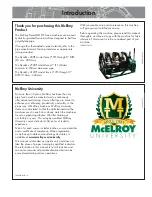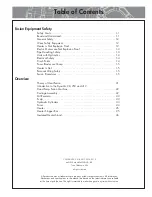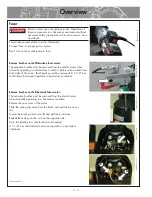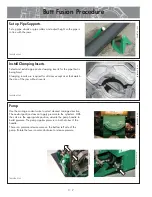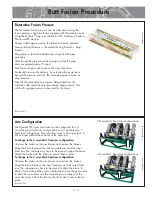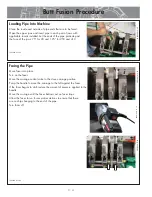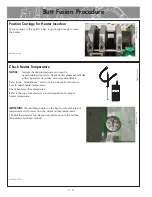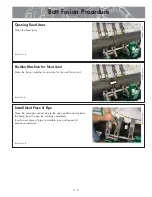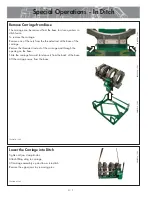
Overview
2 - 1
Theory of Heat Fusion
The principle of heat fusion is to heat two pipe surfaces to
a designated temperature, and then fuse them together by
application of force. This develops pressure which causes flow
of the melted materials, which causes mixing and thus fusion.
When the thermoplastic material is heated, the molecular
structure is transformed into an amorphous condition.
When fusion pressure is applied, the molecules from each
thermoplastic part mix. As the joint cools, the molecules return
to their form, the original interfaces are gone, and the fitting
and pipe have become one monolithic unit. A strong, fully
leak tight connection is the result.
The principal operations include:
Clamping
The pipe pieces are held axially and radially to
allow all subsequent operations to take place.
Facing
The pipe ends are faced to establish clean,
parallel mating surfaces perpendicular to the
centerline of the pipes.
Aligning
The pipe ends are aligned with each other to
minimize mismatch of the pipe walls.
Heating
A melt pattern that penetrates into the pipe is
formed around both pipe ends.
Fusing
The melt patterns are joined with a specified
force, which is constant around the pipe interfacial
area.
Cooling
The fusion joint is held immobile with a specified
force until adequately cooled.
Inspecting
Visually examine the entire circumference of the
joint for compliance with the standard or fusion
procedure used.
TX04660-04-18-16
PH00
36
3B-1-
4-
96
Summary of Contents for DynaMc 250HP
Page 44: ......



